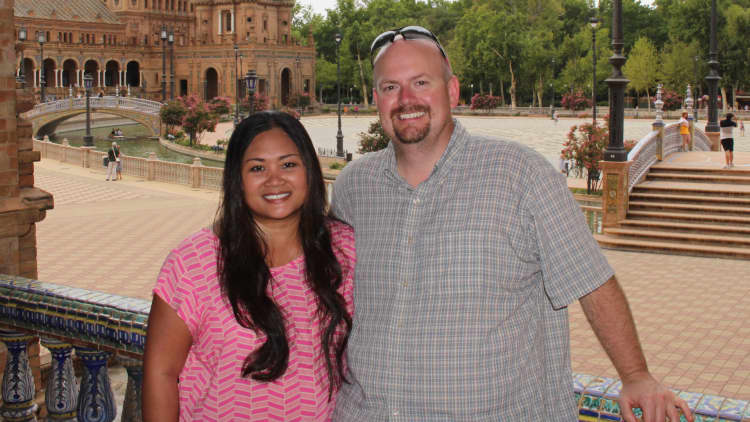Chris Reining buckled down on his finances in his late 20s in order to retire before 40. In short, he worked his way up to saving and investing more than half his income, built a $1 million portfolio by age 35 and officially left his IT job in 2016 at age 37.
But how did he know he had enough to fund his expenses for the rest of his life?
Reining, now 39 and based in Madison, Wisconsin, used a simple formula: the "4 percent rule," which says that in most cases you can safely withdraw 4 percent a year from your retirement savings portfolio.
Flipping the 4 percent rule can help you figure out how big your portfolio needs to be, or what's called your "magic number." Simply divide your annual spending by 0.04 (or multiple it by 25) to get your target.
"It really came down to, once I have enough money where I can withdraw 4 percent, then I can walk away," he tells CNBC Make It. "I typically spend somewhere between $30,000 and $40,000 a year, meaning I needed to get to $1 million ($40,000 / 0.04)."
Saving that much "can seem overwhelming for most people," says Reining, "but it just comes down to being disciplined and making saving and investing a habit — and the easiest way to do that is to spend what's left after investing, instead of doing what most people do which is trying to invest what's left after spending. That just never works."

Reining, who's been living off of his investments for the past three years and is "not really worried about ever running out of money," is by no means the only early retiree relying on the 4 percent rule.
The financial blogger at "The Money Wizard" — a Minneapolis-based millennial who goes by the pen name Sean and is on track to retire by age 37 — plans to live off of about $30,000 per year. Using the 4 percent rule, he estimates he'll need $750,000 ($30,000 / 0.04) in the bank to retire comfortably.
While many early retirees use the 4 percent rule to determine how big their nest egg should be, it is somewhat controversial. Some experts recommend using a lower withdrawal rate to be safe, which is actually what Reining decided to do: "When I finally convinced myself to quit my 9-5 job the investments could support a 3 percent withdrawal, and now that I'm a couple years into early retirement I'm withdrawing a measly 2 percent," he writes on his blog.
And, Sean acknowledges on his blog, the rule isn't perfect : "Is the 4 percent rule exact? No. Is it bullet proof? Of course not." Still, it's a good way to get a general idea of how much you'll need to fund your golden years.
The main takeaway, though, is that the amount you'll need in retirement is directly related to your expenses. "When you hear people say that $1 million or $2 million isn't enough to retire, they're not wrong," writes Reining. "What they're saying is they have an expensive lifestyle. And having an expensive lifestyle is fine but, years ago I realized that my number would be lower if I spent less, and if I spent less I'd have more to save, and if I had more to save then I'd get to my number faster.
"That's how you become financially independent. It's all about the relationship between your numbers."
Don't miss: Self-made millionaire says the mindset he adopted in his 20s helped him retire in his 30s
Like this story? Subscribe to CNBC Make It on YouTube!



